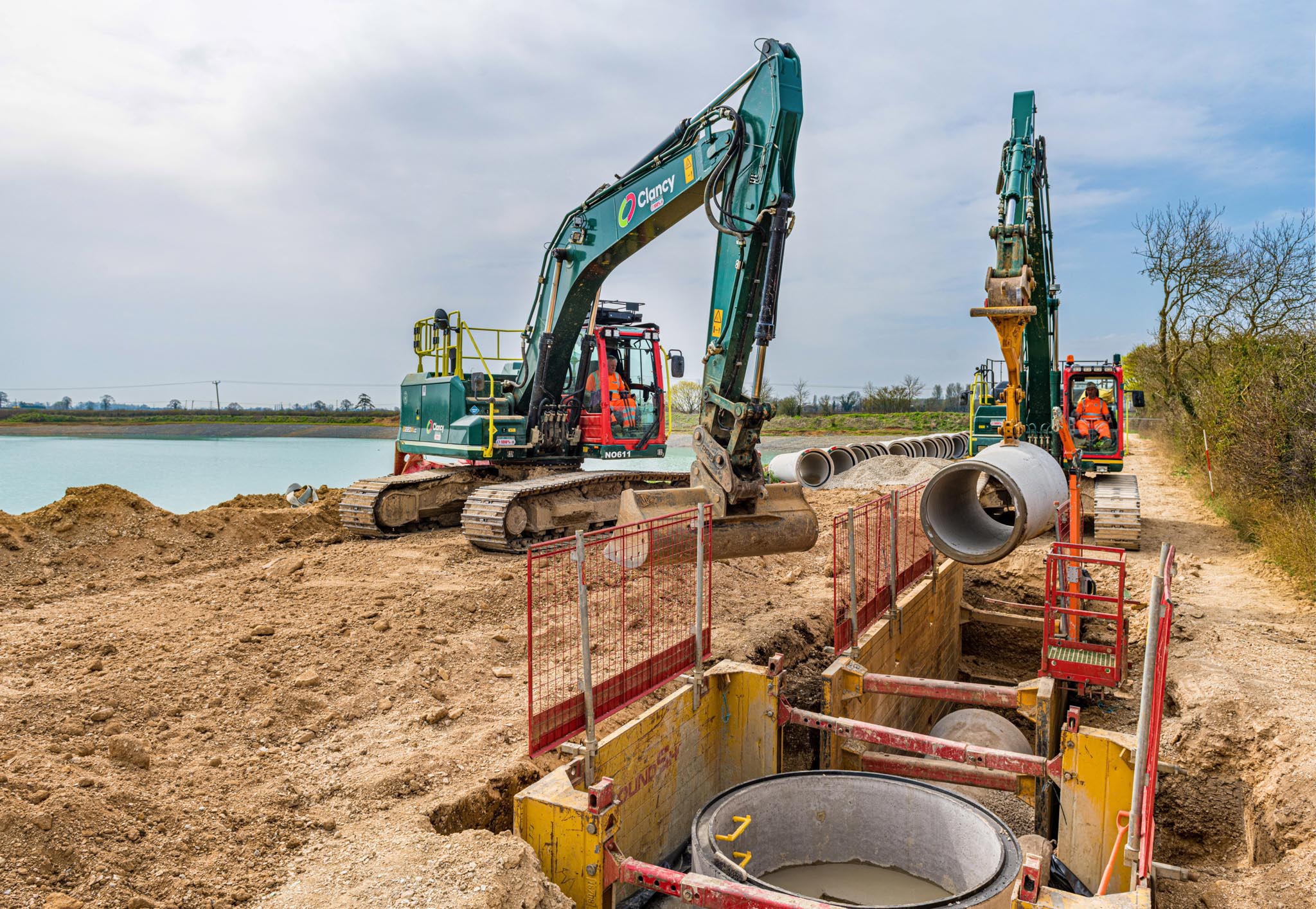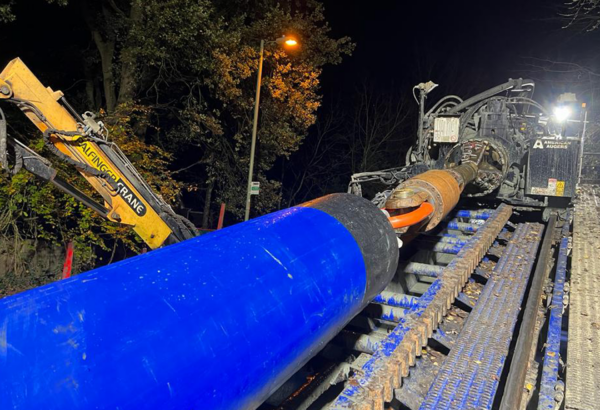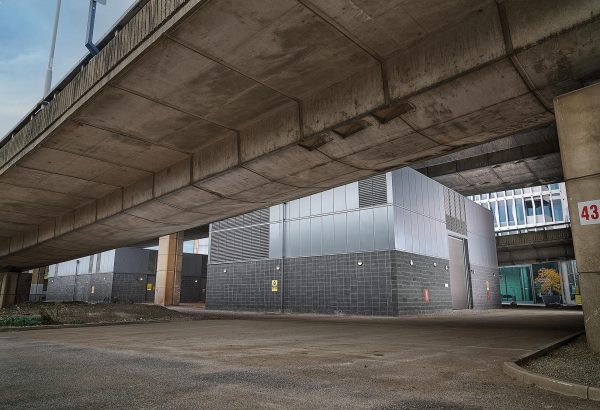This website uses cookies so that we can provide you with the best user experience possible. Cookie information is stored in your browser and performs functions such as recognising you when you return to our website and helping our team to understand which sections of the website you find most interesting and useful.
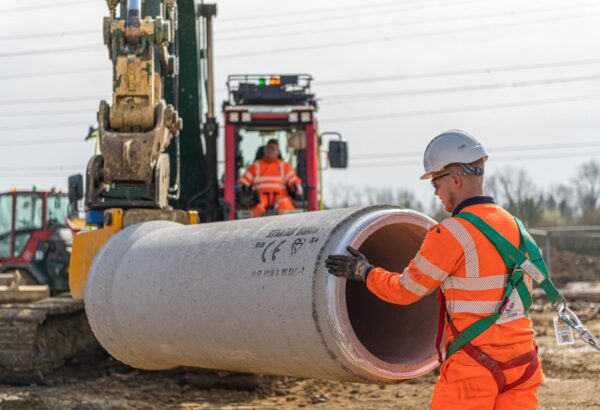
Case Study
Thames Water – Chesterton Farm infrastructure renewal
Background
As urban populations grow, existing infrastructure can struggle to keep up with demand. On the outskirts of Cirencester, a major new housing development was built, including 2,350 new homes and associated facilities, but with an insufficient foul sewer network to accommodate the population increase.
The project was particularly challenging due to a high ground water table, hard ground, large diameter sewers in deep excavations (up to 5.4m), and the pipeline had to cross multiple obstacles such as a quarry, abandoned canals, and railways.
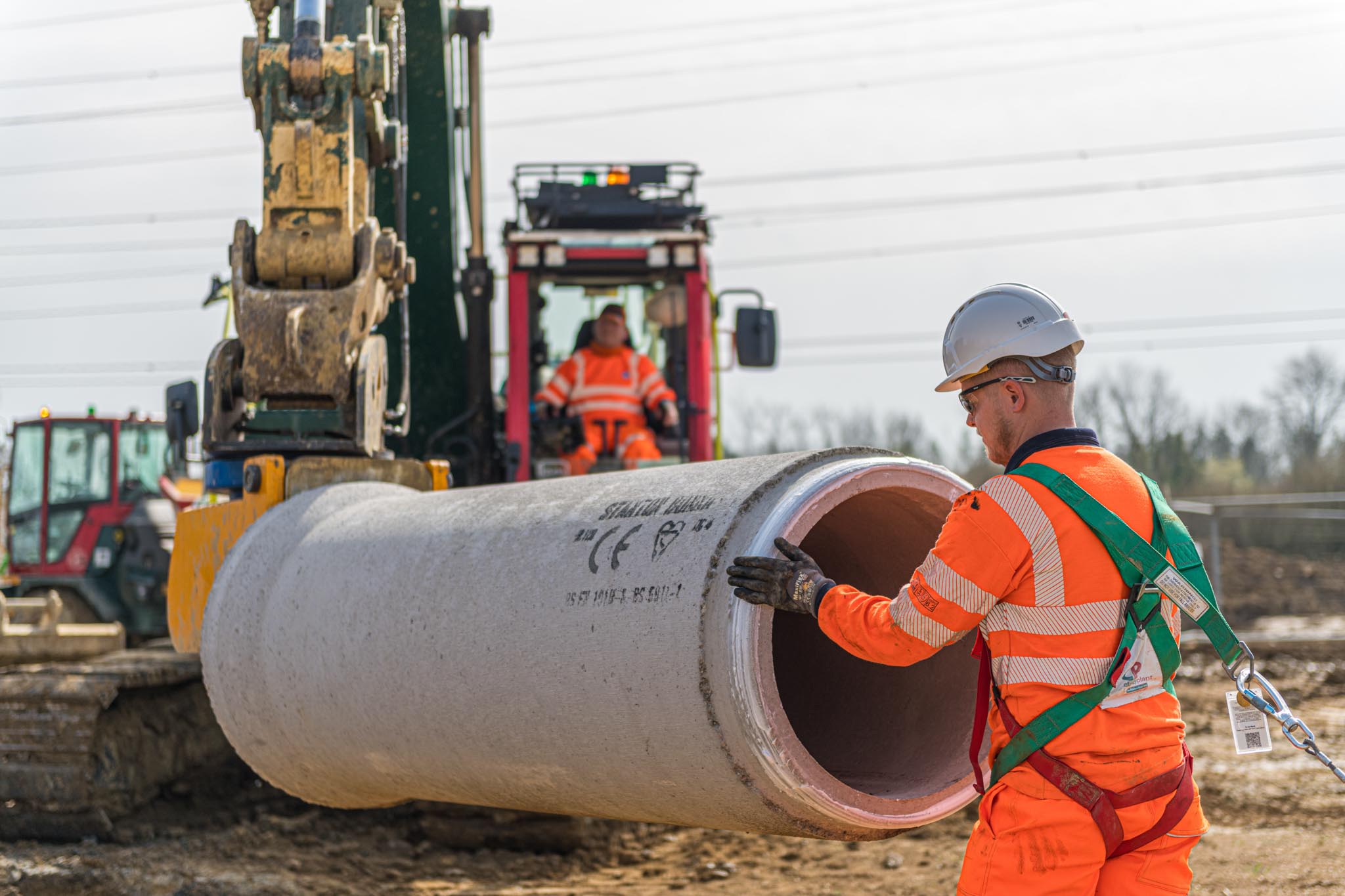

Solution
To support the new housing development, the Infrastructure Alliance (IA) composed of Clancy and Kier Group was tasked to construct a new 3.7km gravity sewer and pumping station to support the future growth of Cirencester.
The new infrastructure transfers flows from the development and Cranhams Pumping Station directly to the Cirencester Sewerage Treatment Works. To support projected capacity increases, 13% of manholes have allowance for future connections.
Benefit
With a working relationship spanning 30+ years, Clancy were well established to undertake the project. Two years prior to works starting on site Clancy engaged with both Thames Water and the designer to develop optimum solutions.
Clancy used innovative techniques such as micro-tunnelling and guided auger bore to cross difficult ‘no-dig’ obstacles. Using the UK’s largest GPS controlled trencher to cut up to 3.6m x 1.1m trenches through hard rock, Clancy also ensured speed, accuracy and safety. The innovative ‘PipeMac’ was deployed for the first time in the UK and delivered a step-change in site safety.
